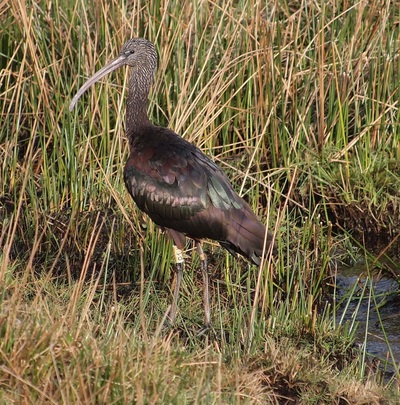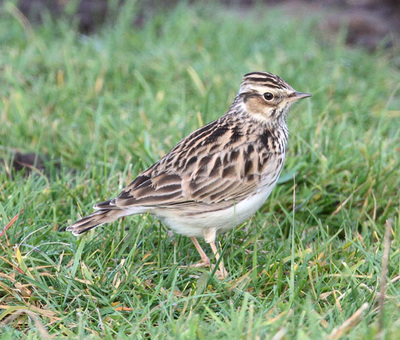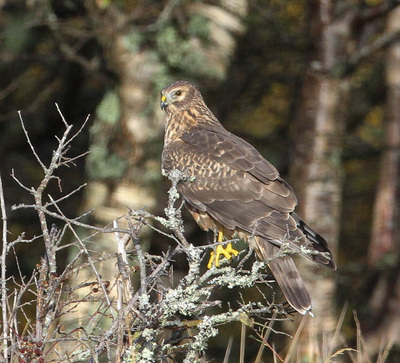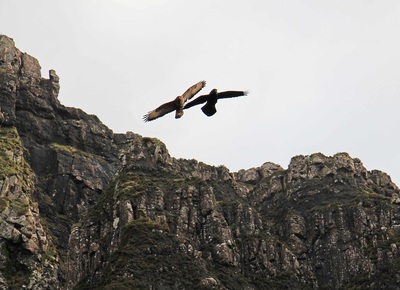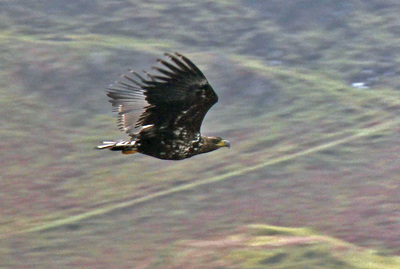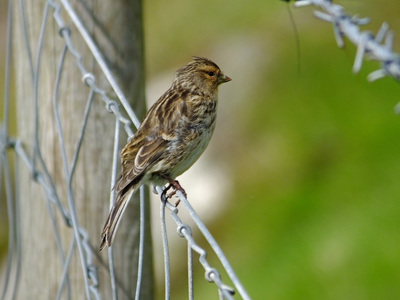Birding on Eigg (Written by John Chester)
Lying approximately 12 miles offshore from the mainland and to the south of Skye, the Isle of Eigg, along with the neighbouring islands of Rum, Muck and Canna, forms the parish of the Small Isles.
Around 8 km (5 miles) in length and 6 km (3.75 miles) at its widest point Eigg is dominated by the Sgurr ridge which reaches 393 m. at its highest point (the ‘Nose’). As would be expected much of the island consists of heather moor and upland bog but, unusually for a Hebridean island, there are also extensive tracts of woodland, both native & planted. The south east & north west sections of the island are basically low lying and fertile, well wooded in the south while the croftland at the north consists of a rich mosaic of hayfields, heaths, marshes & roadbeds. The island’s shorelines are mostly rocky in nature but there are four substantial bays; the sandy Laig & Singing Sands Bays in the Northwest and the more muddy Kildonan and Galmisdale Bays in the Southeast. Along the south and west coasts rich areas of maritime heath top dramatic cliffs which fall sheer to the boulder beaches below. Freshwater habitats on the island are restricted to a series of small upland lochans dotted around the Sgurr ridge, a few small pools in the croftland & the many fast flowing burns running down from the higher ground.
Eigg can be reached daily in the summer by Caledonian MacBrayne ferry from Mallaig or via the MV ‘Sheerwater’ from Arisaig (check websites for current timetables). Visitors are not able to bring vehicles onto the island.
Around 8 km (5 miles) in length and 6 km (3.75 miles) at its widest point Eigg is dominated by the Sgurr ridge which reaches 393 m. at its highest point (the ‘Nose’). As would be expected much of the island consists of heather moor and upland bog but, unusually for a Hebridean island, there are also extensive tracts of woodland, both native & planted. The south east & north west sections of the island are basically low lying and fertile, well wooded in the south while the croftland at the north consists of a rich mosaic of hayfields, heaths, marshes & roadbeds. The island’s shorelines are mostly rocky in nature but there are four substantial bays; the sandy Laig & Singing Sands Bays in the Northwest and the more muddy Kildonan and Galmisdale Bays in the Southeast. Along the south and west coasts rich areas of maritime heath top dramatic cliffs which fall sheer to the boulder beaches below. Freshwater habitats on the island are restricted to a series of small upland lochans dotted around the Sgurr ridge, a few small pools in the croftland & the many fast flowing burns running down from the higher ground.
Eigg can be reached daily in the summer by Caledonian MacBrayne ferry from Mallaig or via the MV ‘Sheerwater’ from Arisaig (check websites for current timetables). Visitors are not able to bring vehicles onto the island.
Birds
Arriving at the pier at the south east of the island the nearby bays should provide the usual gulls and waders including good numbers of Common Sandpipers around the shorelines. Offshore the adjacent Castle Island and the surrounding waters usually produce Red Throated Diver, Great Skua, Arctic Tern and Black Guillemot with the occasional sighting of a White Tailed Eagle flapping over.
The inland areas immediately surrounding the pier are heavily wooded and this woodland supports unusually large populations of small passerines for a Hebridean island. Amongst the species to be encountered here are the common tits & finches, Willow Warblers, Chiffchaffs, Blackcaps, Spotted Flycatchers & Treecreepers as well as the widespread Buzzards and Hooded Crows.
Arriving at the pier at the south east of the island the nearby bays should provide the usual gulls and waders including good numbers of Common Sandpipers around the shorelines. Offshore the adjacent Castle Island and the surrounding waters usually produce Red Throated Diver, Great Skua, Arctic Tern and Black Guillemot with the occasional sighting of a White Tailed Eagle flapping over.
The inland areas immediately surrounding the pier are heavily wooded and this woodland supports unusually large populations of small passerines for a Hebridean island. Amongst the species to be encountered here are the common tits & finches, Willow Warblers, Chiffchaffs, Blackcaps, Spotted Flycatchers & Treecreepers as well as the widespread Buzzards and Hooded Crows.
From the pier the Grulin track runs west below the Sgurr ridge through a mixture of moorland and rough grazings out to the West Cliffs. Species regularly seen here include Cuckoo, Meadow Pipit, Stonechat, Wheatear, Raven & Twite while there is a reasonable chance of encountering one of the resident pairs of Golden Eagles towards the west end. The higher moorland around the Sgurr itself produces much the same species as well as the odd Red Grouse.
Going back to the pier the main road north leads across the island to the croftland at the north west corner. The centre of the island is dominated by a large forestry plantation which is now being managed in an environmentally beneficial fashion. Birds that can be seen in this area include Hen Harrier, Cuckoo, Lesser Redpoll and the occasional Common Crossbill whilst Long Eared Owls & roding Woodcock can be encountered at dusk.
The croftland itself (which incidentally offers stunning views across to Rum) is the main area on the island for species such as Snipe, Whinchat, Grasshopper Warbler, Sedge Warbler & Whitethroat whilst the bays can hold late Great Northern Divers as well as Red Throated Divers and the odd passage wader.
A book on the birds of Eigg is available at the craft shop on the pier.
Going back to the pier the main road north leads across the island to the croftland at the north west corner. The centre of the island is dominated by a large forestry plantation which is now being managed in an environmentally beneficial fashion. Birds that can be seen in this area include Hen Harrier, Cuckoo, Lesser Redpoll and the occasional Common Crossbill whilst Long Eared Owls & roding Woodcock can be encountered at dusk.
The croftland itself (which incidentally offers stunning views across to Rum) is the main area on the island for species such as Snipe, Whinchat, Grasshopper Warbler, Sedge Warbler & Whitethroat whilst the bays can hold late Great Northern Divers as well as Red Throated Divers and the odd passage wader.
A book on the birds of Eigg is available at the craft shop on the pier.
